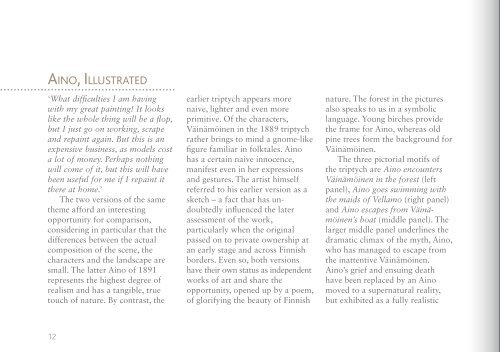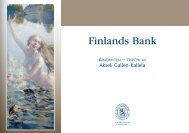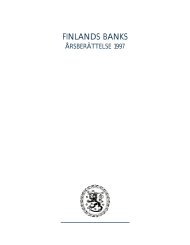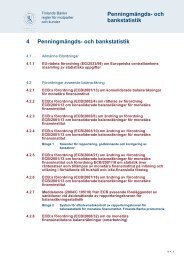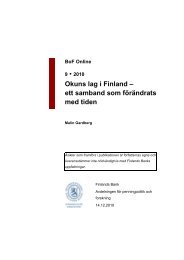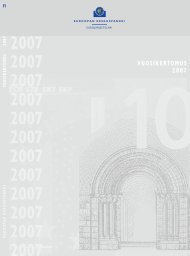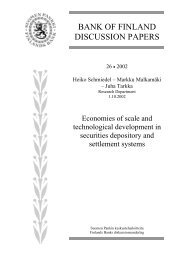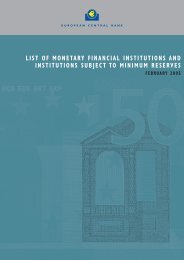Akseli Gallen-Kallela - Suomen Pankki
Akseli Gallen-Kallela - Suomen Pankki
Akseli Gallen-Kallela - Suomen Pankki
You also want an ePaper? Increase the reach of your titles
YUMPU automatically turns print PDFs into web optimized ePapers that Google loves.
Aino, Illustrated<br />
‘What difficulties I am having<br />
with my great painting! It looks<br />
like the whole thing will be a flop,<br />
but I just go on working, scrape<br />
and repaint again. But this is an<br />
expensive business, as models cost<br />
a lot of money. Perhaps nothing<br />
will come of it, but this will have<br />
been useful for me if I repaint it<br />
there at home.’<br />
The two versions of the same<br />
theme afford an interesting<br />
opportunity for comparison,<br />
considering in particular that the<br />
differences between the actual<br />
composition of the scene, the<br />
characters and the landscape are<br />
small. The latter Aino of 1891<br />
represents the highest degree of<br />
realism and has a tangible, true<br />
touch of nature. By contrast, the<br />
earlier triptych appears more<br />
naive, lighter and even more<br />
primitive. Of the characters,<br />
Väinämöinen in the 1889 triptych<br />
rather brings to mind a gnome-like<br />
figure familiar in folktales. Aino<br />
has a certain naive innocence,<br />
manifest even in her expressions<br />
and gestures. The artist himself<br />
referred to his earlier version as a<br />
sketch – a fact that has undoubtedly<br />
influenced the later<br />
assessment of the work,<br />
particularly when the original<br />
passed on to private ownership at<br />
an early stage and across Finnish<br />
borders. Even so, both versions<br />
have their own status as independent<br />
works of art and share the<br />
opportunity, opened up by a poem,<br />
of glorifying the beauty of Finnish<br />
nature. The forest in the pictures<br />
also speaks to us in a symbolic<br />
language. Young birches provide<br />
the frame for Aino, whereas old<br />
pine trees form the background for<br />
Väinämöinen.<br />
The three pictorial motifs of<br />
the triptych are Aino encounters<br />
Väinämöinen in the forest (left<br />
panel), Aino goes swimming with<br />
the maids of Vellamo (right panel)<br />
and Aino escapes from Väinämöinen’s<br />
boat (middle panel). The<br />
larger middle panel underlines the<br />
dramatic climax of the myth, Aino,<br />
who has managed to escape from<br />
the inattentive Väinämöinen.<br />
Aino’s grief and ensuing death<br />
have been replaced by an Aino<br />
moved to a supernatural reality,<br />
but exhibited as a fully realistic<br />
12


